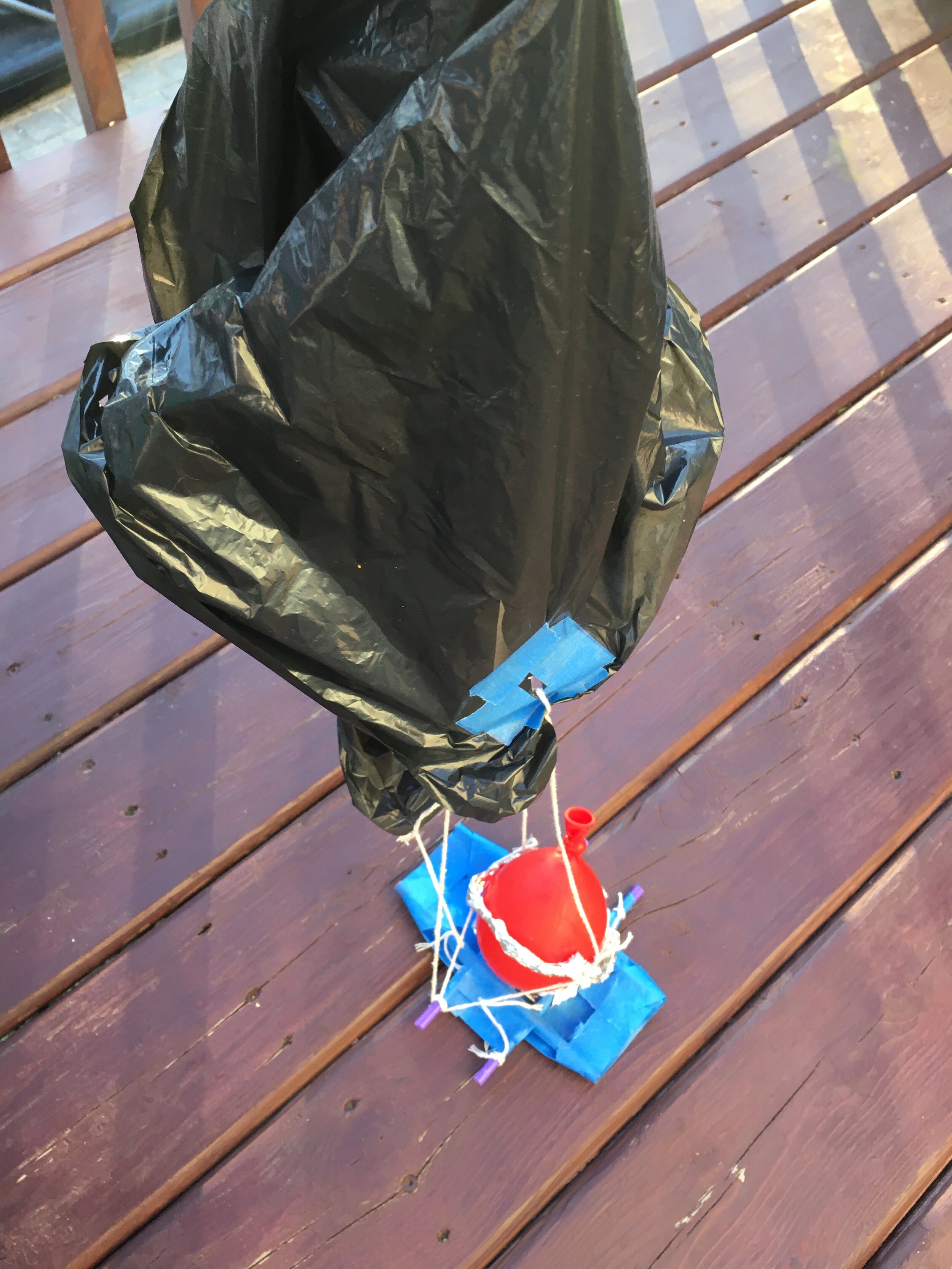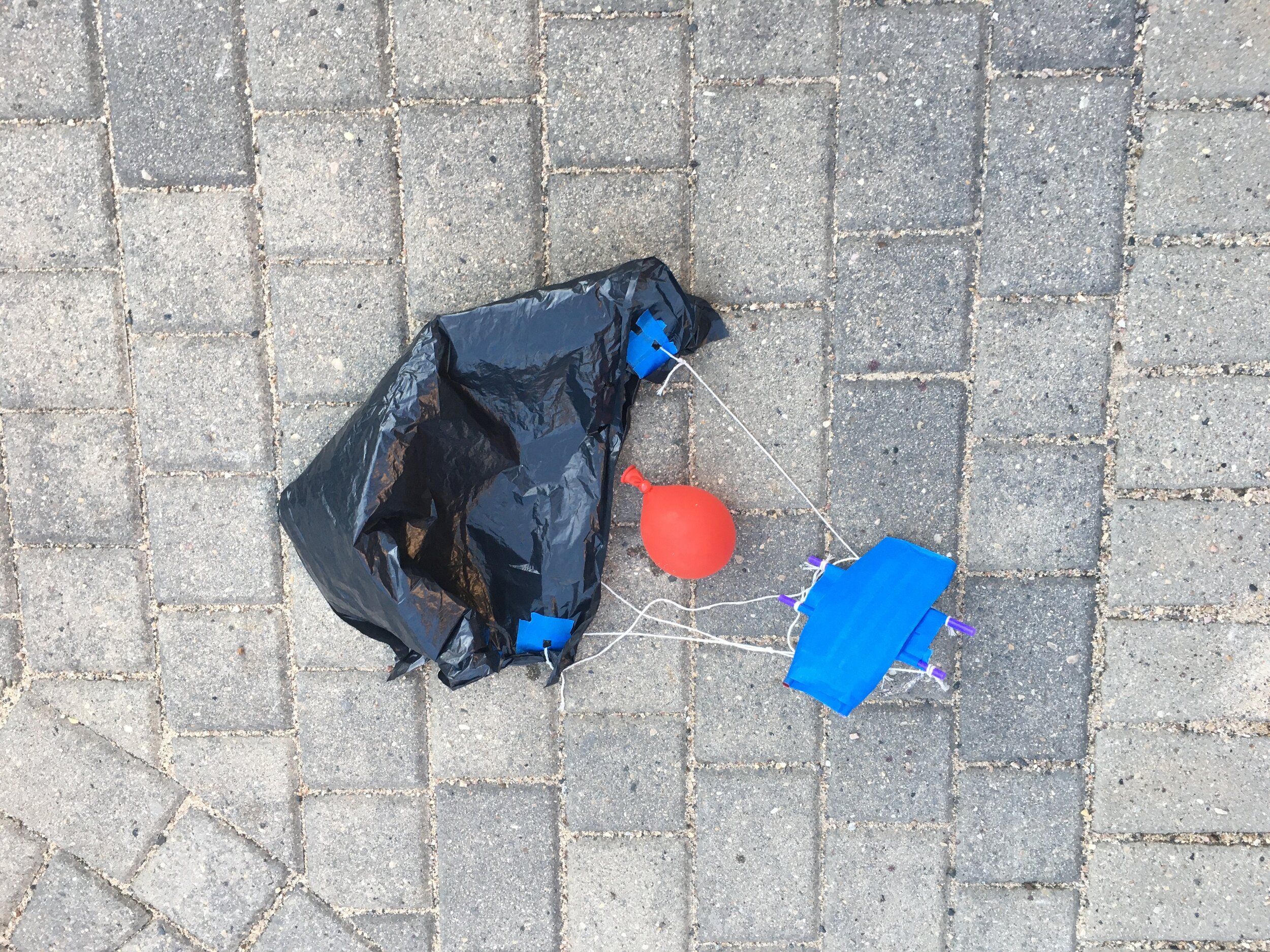Mission Parachute Drop
Mission Parachute Drop
Here is a summertime twist on the classic egg drop engineering challenge. Instead of protecting an egg with a parachute you design and create one that will prevent a water balloon from bursting when dropped to the ground using only the supplies listed.
What you need:
1 piece of paper (tissue paper or newspaper)
String (no more than 100 cm)
6 straws or wooden popsicle sticks
25 toothpicks
Plastic garbage bag
Aluminum foil (1 piece)
Masking tape
Small balloon
Water
Scissors
What you do:
Research images of parachutes. How to they look when falling? What makes them expand? What forces are utilized when the parachute drops? How can a person or object be protected as they land?
Your challenge is to make a parachute with the water balloon as cargo. You will need to make your parachute land slowly and fall to the ground safely.
Gather materials: use only the materials listed to make it more challenging. From the images you saw and the supplies available sketch out the design of the parachute.
Cut a large piece from the plastic garbage bag. Make your own design, either round, square or octagon. This is the canopy.
Cut small holes around the edges of the canopy so the string can be attached. Secure the holes with a bit of tape.
Attached the string to each hole. Add more tape to make sure that the string will not pull through the plastic.
Create a basket or holder for the water balloon from the straws, popsicle sticks, and toothpicks. Cover any sharp edges with aluminum foil, plastic and tape. Make sure the balloon can fit safely and securely.
Fill the balloon with water keeping it small enough to fit safely into the basket you created.
Test your parachute: Find an outdoor location in which you can stand on a surface that elevates you about one metre from the ground. Places such as the top of a deck, the ladder of a slide, or from a picnic table. Be sure to ask an adult for help with climbing. Make sure that the water balloon is secure and safe in the basket. Count down and release the balloon and parachute.
Observe the results. Was your parachute built to safely land the water balloon on the ground? What things would you change? If the parachute was dropped from an airplane, would it survive the drop? Make changes and modification to the parachute and try it again!
How it works:
Everything including air is made of matter. You may not always feel it, but air is always pushing on you. Think about a time you rode your bike fast or had a window open when the car was moving, did you feel the air on you? This is called air resistance or drag. Drag is the force that is felt when a solid object moves through air. When designing a parachute, you want there to be a lot of drag on the object that is falling so that it slows down, reducing its speed and making it land soft.
The design of a parachute is important. Most parachutes are round, and dome shaped but some are made rectangular. The rectangular parachutes have many cells for air to get caught in and slow the object as it falls.
Taking it further:
Test the gravitational force: try dropping two objects that weigh different amounts, such as a rock and a feather, to the ground and observe how they fall. Galileo conducted this experiment a long time ago, by dropping a feather and a rock from a tower. He wanted to know if the weight of an object affects how fast it will fall. When you did this experiment did you notice that the rock landed first. It was not because it was heavier but because of its shape. Just like a parachute a feather shape causes it to float down using as much drag as possible in landing.
Loving this content? Make a donation to the Saskatchewan Science Centre!
#letssciencethis #SaskScienceCentre #AtHomeWithCASC #ScienceChampions #ScienceAtHome #realsciencerealfun





